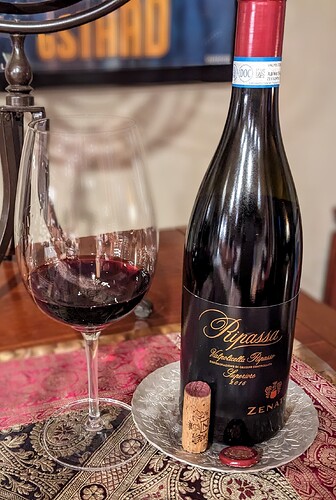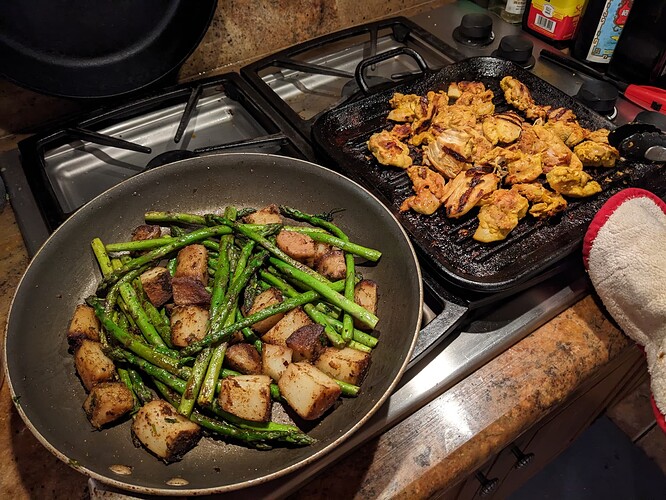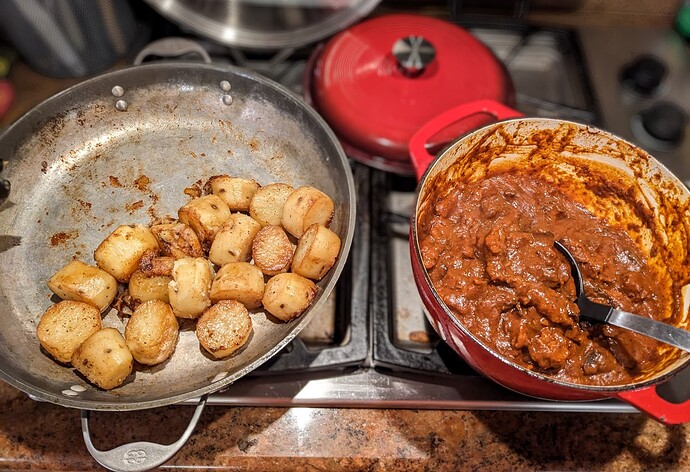Had my first bottle (to my recollection) of Valpolicella Ripasso last night (2016 Bussola Ca’ del Laito). If memory serves, I did not pay a whole lot for this bottle, but it delivered in a big way. Loved the core of rich fruit, with lots of really interesting secondary elements, which I assume comes from the winemaking method.
Bottom line, I am rather intrigued, and looking to sample more broadly. Wondering if some of our experts in here can offer some direction, recommendations, wineries, retailers, and so forth. Thanks in advance for any information provided. This is really the great thing about wine, always something new to be discovered.
The Ca del Laito is a nice bottle. Not sure if you want to stick to Ripasso, but if you’re interested in moving up to Amarone Bussola does a great job there as well in my opinion (from limited experience).
I second Max’s sentiments. I am certainly a fan of Bussola’s Amarone and I love their Recioto (the dessert wine of the same grapes). I havent had the Ripasso though.
For Ripasso, I am a fan of Bertani and Zenato, but I haven’t drank quite as wide with Ripasso as I would like to have.
For Amarone, they get quite a bit more pricey and the less expensive bottles are tough to navigate. On the more affordable end there is San Rustico & Giuseppe Campagnola that I find to be solid. A bit more than those you have Masi, Allegrini & Bussola which are all quality producers.
One other super affordable option is Allegrini’s Palazzo della Torre. Sub $20 and great qpr on good vintages imo.
Zenato is very consistent.
I second Josephs statement on Allegrini’s Palazzo della Torre. It is one of my favorite QPR valpolicella’s.
Except it isn’t a Valpolicella.
Right, it is ripasso method. Thanks for correcting me on my laziness while typing.
Well it ain’t that either.
It’s a Rosso Veronese with some atypical grape varieties for the region and a portion of the grapes are dried for a short while. It’s basically a dry red wine with a little bit of appassimento method used in the vinification.
True, but it does often drink quite like a Ripasso. I think the only atypical grape is Sangiovese and it makes up 5% in the vintages I have had and I think currently. I would be pretty impressed if someone could pick the sangiovese out in a tasting without knowing it was there though. Have you ever seen any info on what % of the grapes are actually left to dry?
Most likely nobody will find Sangiovese from the blend, but if the variety is not allowed in the classic Valpolicella blend, then it isn’t Valpolicella. Just like adding a little bit of Barbera to a Barolo makes the wine ineligible for the Barolo appellation and so forth.
But I do agree that it drinks more like a Ripasso than a typical Valpolicella (as Valpolicella reds tend to be lighter and fresher in character, whereas this wine has a bit more body and heft like a Ripasso).
The producer website says nothing beyond “a small portion of grapes” are dried. I’ve seen some importers mention that 30% of the grapes gets dried, but I’ve no official sources to back this up nor do I know how long does the appassimento process take.
But the wine is quite similar to Masi Campofiorin, which is another Ripasso-alternative labeled as Rosso Veronese. (And since the wines aren’t DOC Valpolciella, both the producers are allowed to use grapes sourced from a region much larger than just the Valpolicella.)
The 2016 Zenato ‘Ripassa’ [Valpolicello Ripasso Superiore] has been a solid, chunky red to enjoy over the last few days, that might appeal to a broad spectrum. Note that this is branded as Ripassa on the front label, even though the DO is spelled slightly differently. Personally I think these black labels on black bottles are ill considered, but it must work well enough for the producers. Zenato is still flying under the DOC’s flag - and procedure/blend rules - unlike quasi comparables like Allegrini’s Pallazzo della Torre or Masi’s Campofiorin, which both just marked with a brand which offers more flexibility in production. In the world of mass market ‘baby Amarone’ I think they are all fine, but tend to prefer Allegrini’s version. This is 14.5% abv, full bodied, but without much structure/tannin, and tastes like it might not be fermented dry, although that might just be a tactile/glycerin effect. I find some almonds, coconut, flowers on the nose which segues into a chocolate, pipe smokey palate. This would be a good blend to select when traveling, or at a restaurant/bar, since it’s fairly priced, broadly available, and due to the production method, likely very consistent. 2016 get’s a B+ in my ledger, granting this category/region are not areas I pay attention to.
Also I discovered that this is wholly unsuitable with an aloo asparagus sabzi, as well as stovetop (!) tandoori chicken. Initially, I’d been thinking zinfandel for this, but was not enthused about having to consume most of that selection myself, since the better half doesn’t care for that varietal. Tonight I’ll try the rest of the Zenato with a beef goulash, which ought to partner better, since Veneto is near Austro-Hungary.
The name is because Ripassa is the product name, not the appellation. You know, trying to convey a more feminine feel instead of the hefty masculine name of the appellation?
And one of the reasons why Zenato is “flying under the DOC’s flag” is because Ripassa is and always has been made with fruit sourced from Valpolicella, whereas Palazzo della Torre and Campofiorin are both vineyard names and these were originally single-vineyard wines. Both these vineyards were situated outside the DOC Valpolicella zone.
Palazzo della Torre and Campofiorin are both alternatives to Ripasso, not baby Amarones. The style is quite different, especially if you taste them next to a true Amarone.
However, I do personally view Ripassa as more of a baby Amarone than a run-of-the-mill Ripasso - it usually has stood out a head taller than the other Ripassos, packing more heft, punch and complexity, and in Amarone blind tastings you often can’t really make difference between it and the lesser Amarones. You’d never confuse it with a proper, well-made Amarone, though.
Thank you for clarifying those nuances Otto. I have not tasted much from the region, especially not in comparison panels. A typical market in my area might carry two blancs from the area and one, maybe two reds. As others mention upthread, still good values in the US, but not worth a rack slot at home.
On the second night, I finished the bottle with a goulash and some browned/steamed potatoes, which paired better than the prior supper. Some of my tricks to amplify the desired red in this is to add a dollop of tomato paste as well as cooking it in an auspicious red enameled cast iron pot.
The best luck I have had with Valpolicella wines are the “simpler” wines. Remember (fondly) a tavern in Verona with a simple but fresh delicious house wine that killed it with the local food.
But then again, I have only a had a handful of Amarone and Ripasso wines.
I’ve had my fair share of Ripassos and Amarones and, apart from a few special producers, I’d say the best luck one is going to have is with the simpler basic-level Valpolicellas!


